Weston House // Dense Browns Cladding, Decking & Flooring
Amy Elleway is a passionate, engaged and motivated Canberra local. We had a great time chatting with her on the build process for her new 9 star energy rated home, her inspirations from Japan and the natural world, and her sustainable seafood business Wild South Seafood.
See the full interview below the featured products.
Project Partners: Builder - Envision Living, Drafter/Structural Insulated Panel Provider - Peter O’Sullivan from SmartSIPs
SHIPLAP INTERIOR & EXTERIOR CLADDING
TIMBER SPECIES Recycled Blackbutt / Dense Browns
SOURCED FROM Remilled from timbers salvaged from Sydney house demolitions
FINISH Sawtooth
SIZE 78mm wide x 18mm thick
Head to the Cladding product page to learn more, or contact us to enquire.
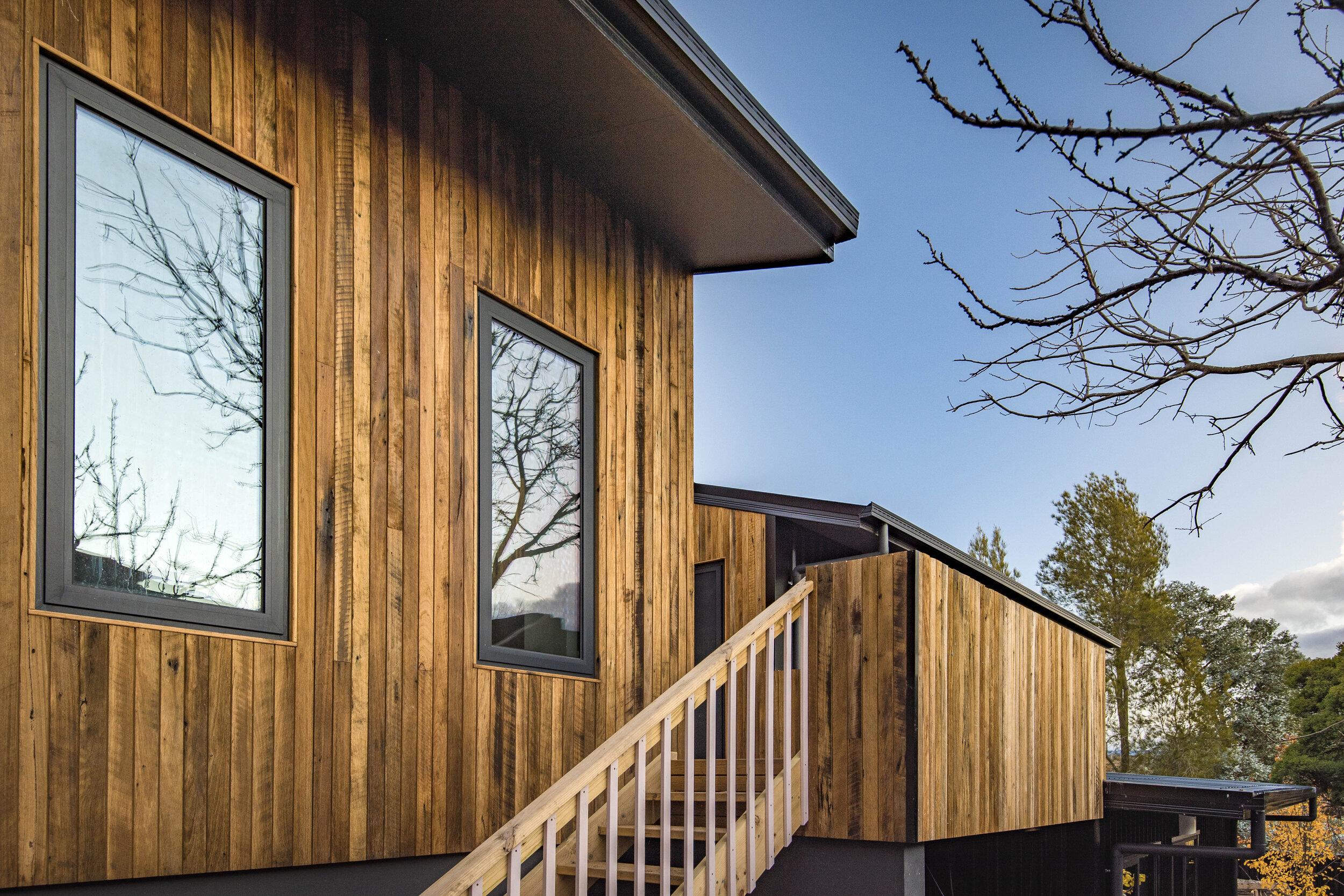

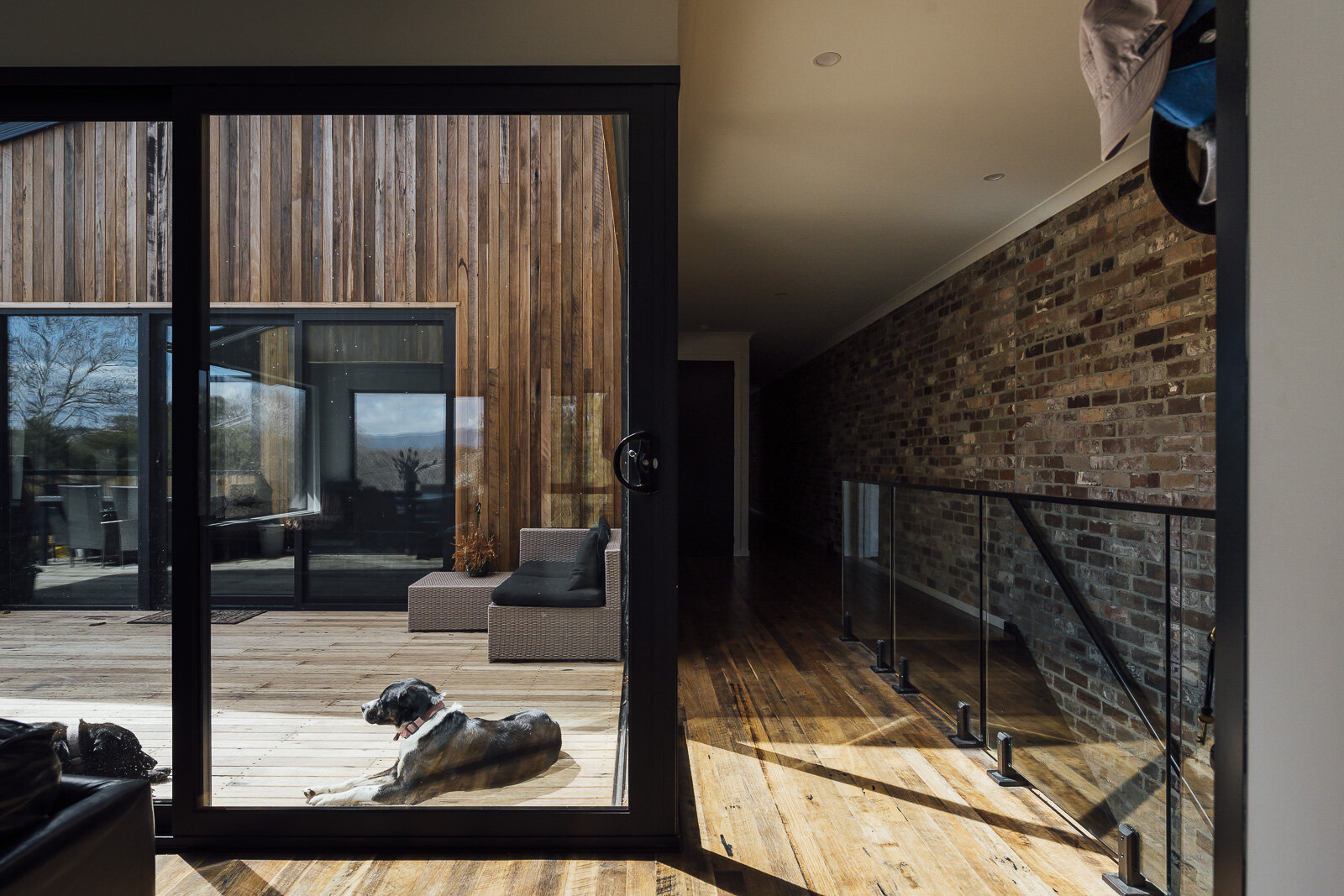
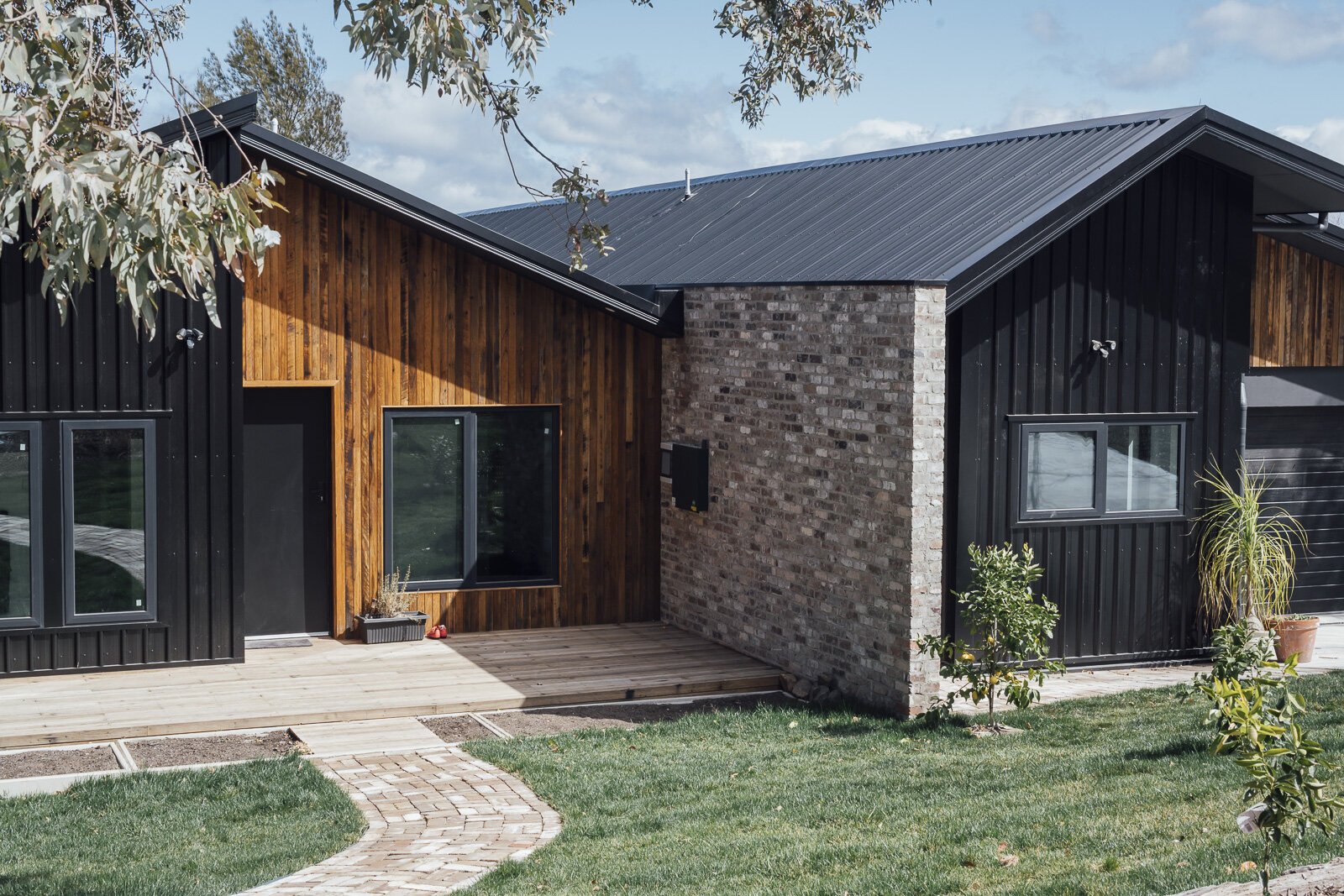
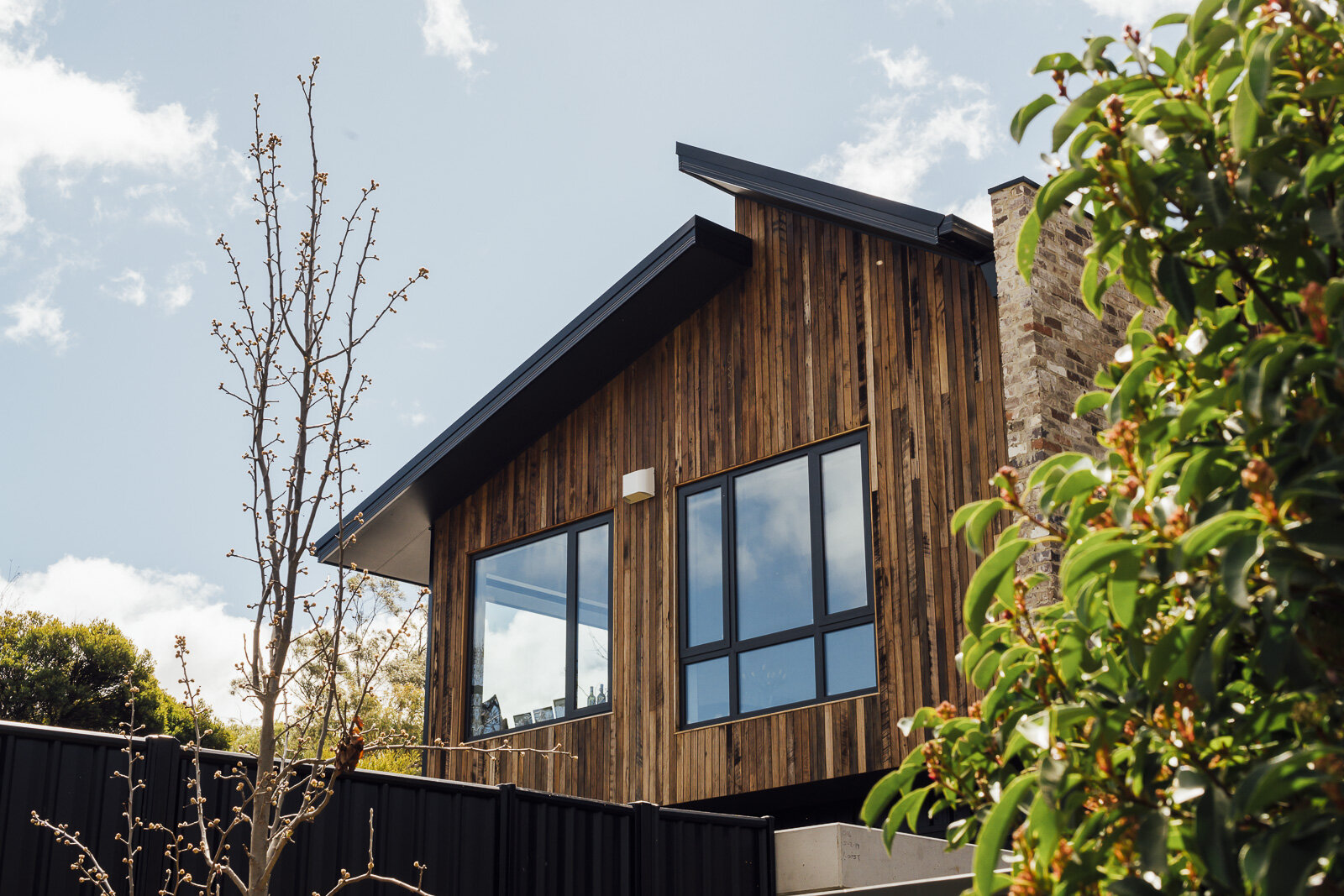
DECKING
TIMBER SPECIES Recycled Blackbutt / Dense Browns
SOURCED FROM Remilled from timbers salvaged from Sydney house demolitions
FINISH Clean dressed
SIZE 85mm wide x 18mm thick
Head to the Decking product page to learn more, or contact us to enquire.

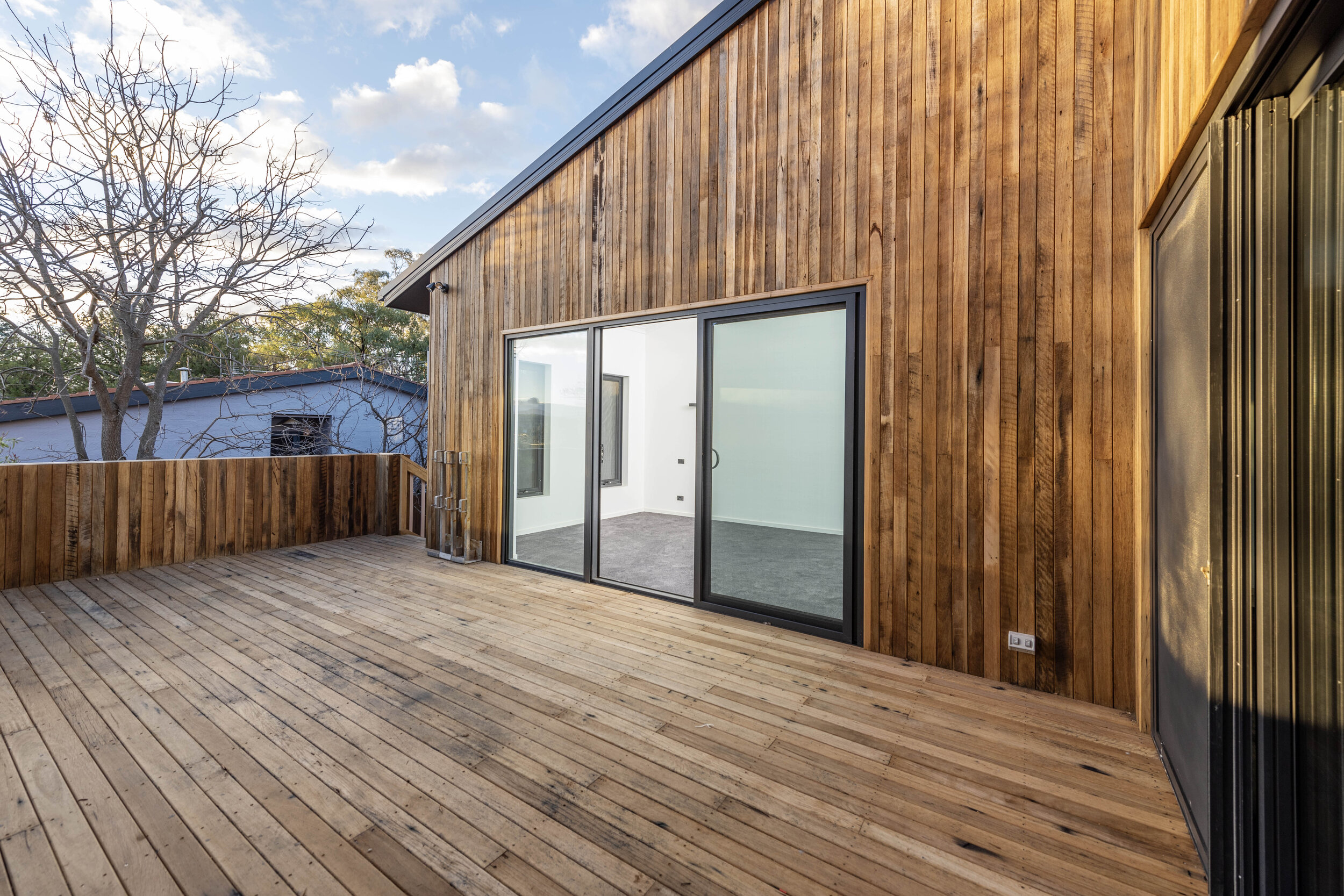
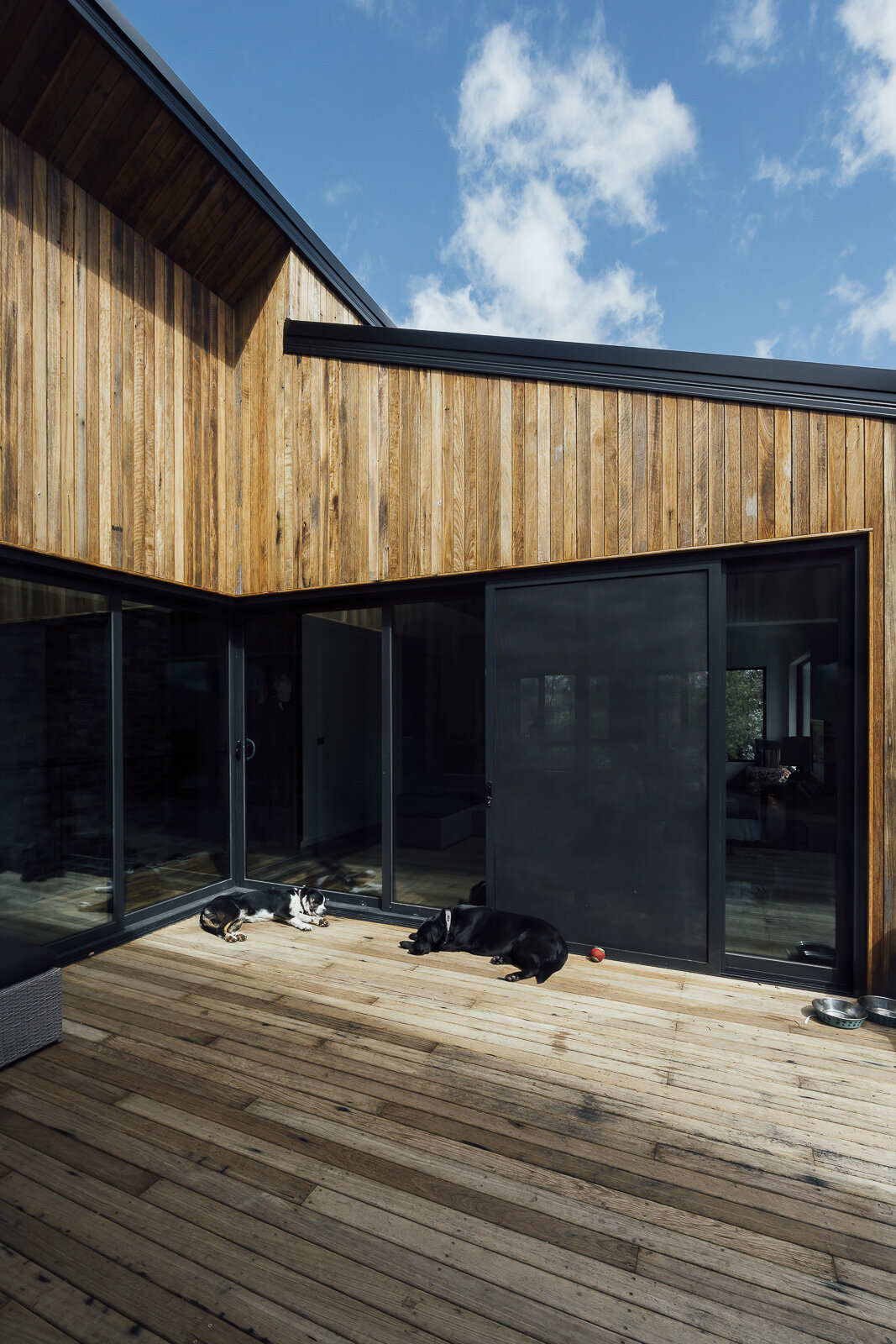
RE-MILLED FLOORING
TIMBER SPECIES Recycled Blackbutt / Dense Browns
SOURCED FROM Remilled from timbers salvaged from Sydney house demolitions
FINISH Sawtooth
SIZE 80mm wide x 19mm thick
Head to the Re-Milled Flooring page to learn more, or contact us to enquire.
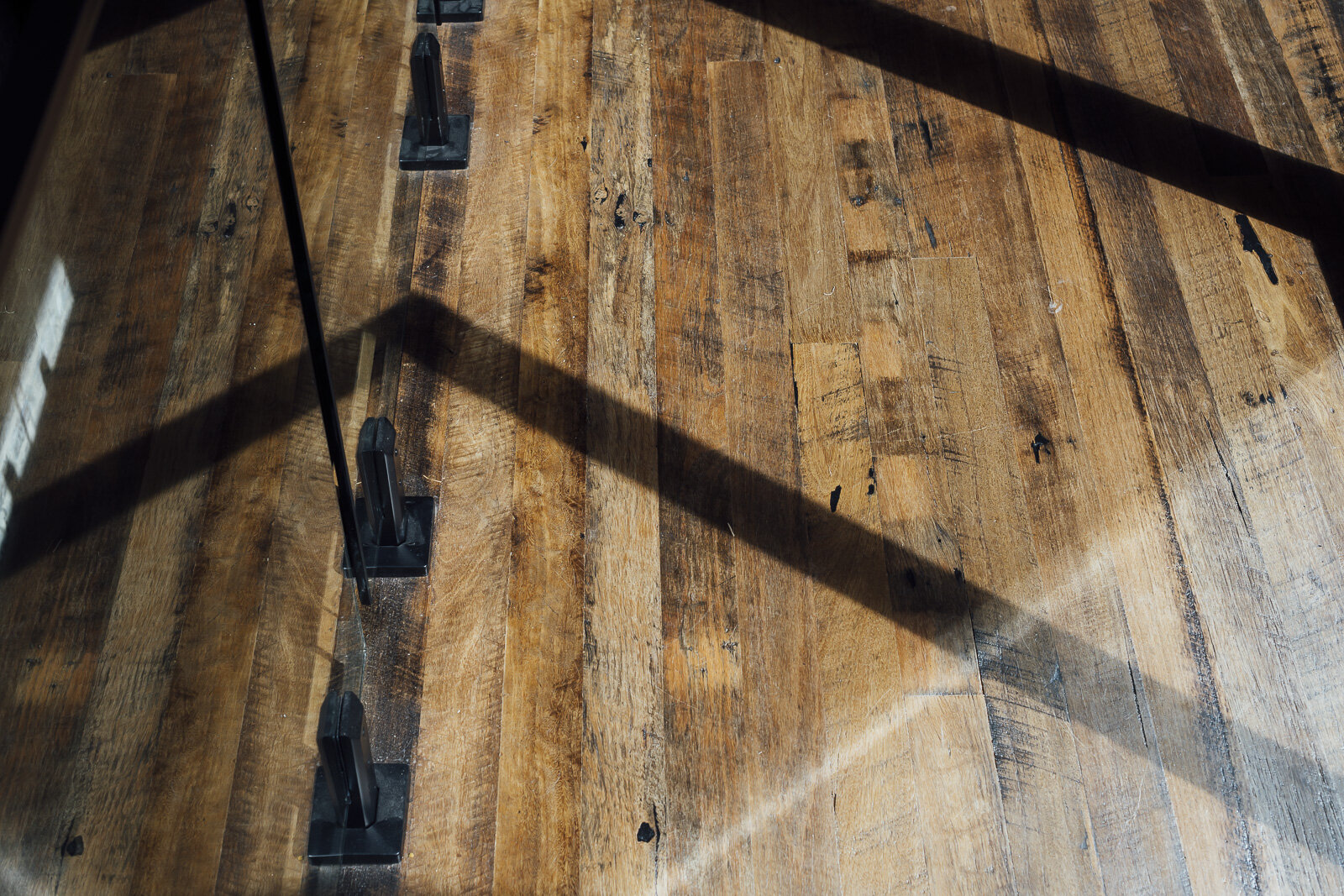
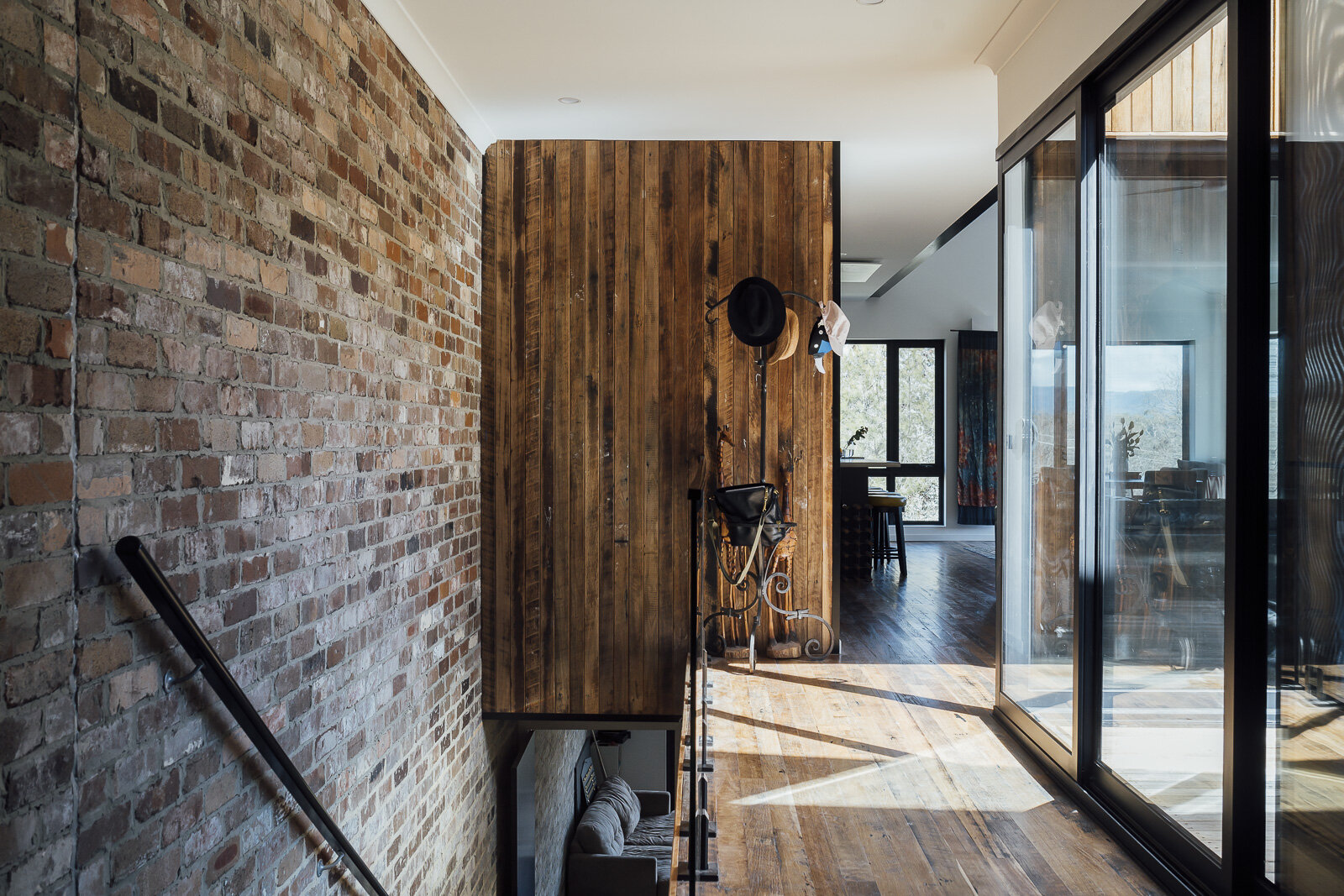
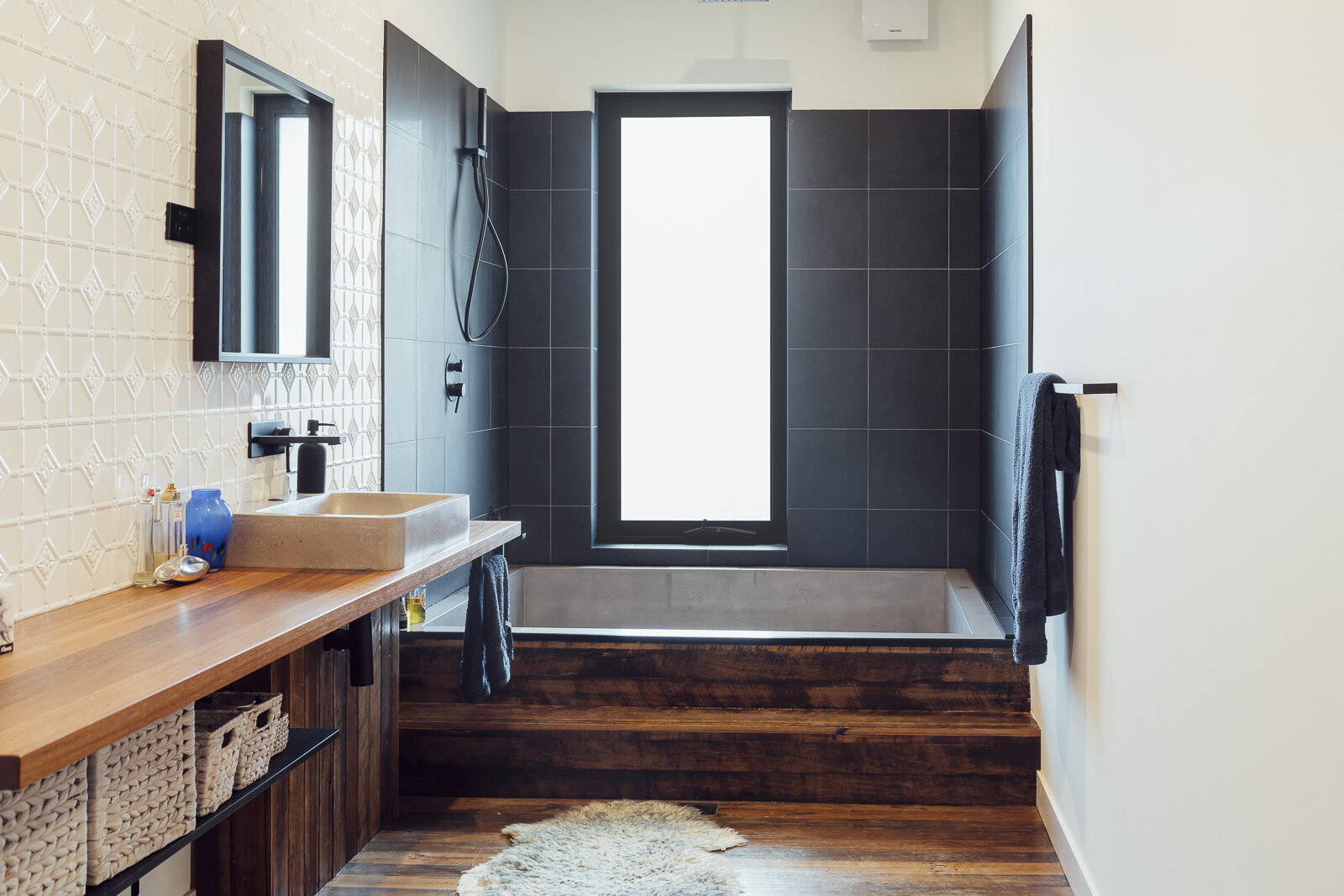

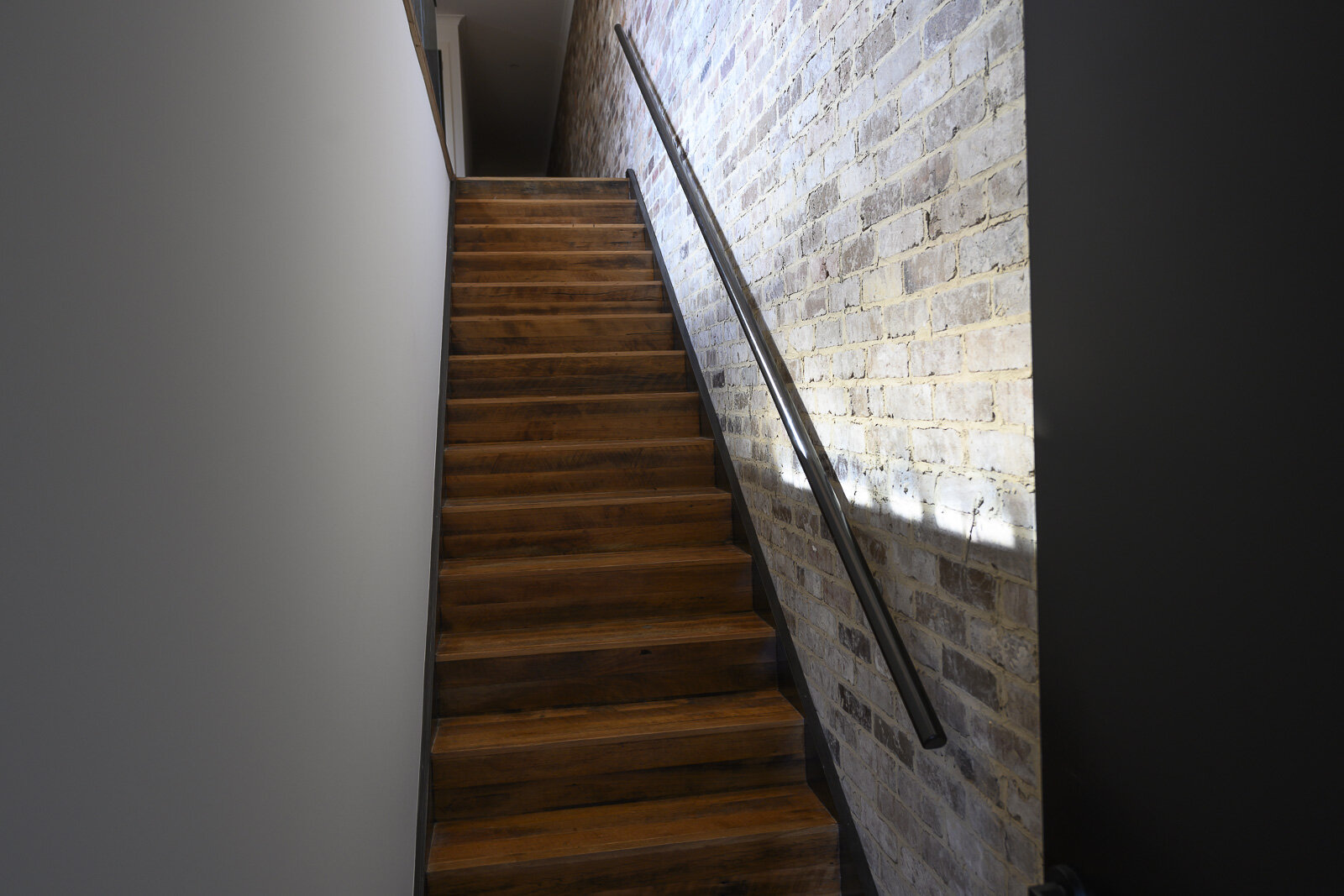
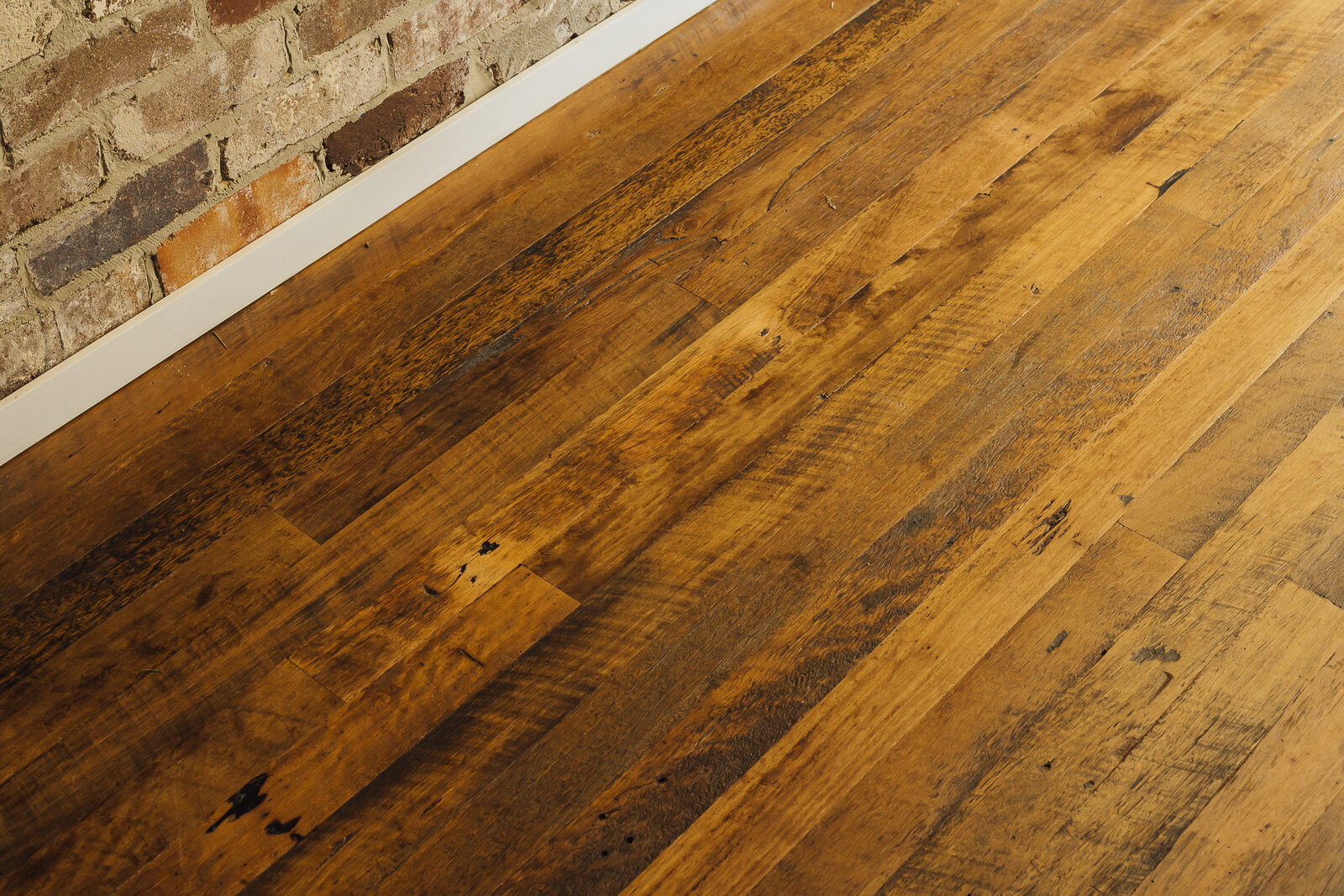
An Interview with Amy
Why did you choose recycled timber for your new home?
A couple of reasons, although they might be linked. The first reason is because of my ethos about sustainability, which leads to an aesthetic of wanting the natural world around me. I actually started off wanting to clad the house in Shou Sugi Ban, which is the ancient Japanese technique of charcoaling or charring hardwood timber to build houses out of. It creates hugely protective qualities in the wood and turns it black. So you can build a house out of timber and it will stand there for 2000 years. I ended up not being able to clad in Shou Sugi Ban, but it’s what led me to the most rustic level of Thor’s timber that I could get to. Those older timbers have more character in my view. You’re using recycled timber that has an aged look to it. I find beauty in that idea of longevity and reusing, not throwing away. And so why make something old look new, when what you appreciate about it is its oldness.Side note, our recycled timber cladding was also cheaper than using colorbond cladding (whole project including install). Amy’s builder Keith from Envision Living did the costings.
Did the project come out like you imagined it?
It came out a whole let better than I had imagined, as I had designed the whole thing from scratch with no real design credentials. I did have the help of a drafter/building designer to put my vision on paper, and he was very helpful actually in finishing the vision. He created the beautiful roofline which was beyond my amateur architectural capabilities quite frankly haha.
I looked for a drafter, not an architect on the basis that I knew what I wanted and just needed someone to help translate it. I lucked out in finding someone who in fact contributed significantly in the end result. Funnily enough I found him not because he was a drafter, but because he was the person developing and producing the structurally insulated panels that I built the house out of - which gives the house its 9 star energy rating.
Amy worked with Peter O’Sullivan from SmartSIPs.com.au
So when I say sustainable house, it was about using recycled and natural materials. But it was also about passive house theory and building a house that was thermally stable. What I was aiming to create was a 10 star rated house - energy neutral. And the way you do that is by building your house on passive house theory which is what they’ve been doing in Europe for years and years. This involved moving away from solar north and thermal mass a little which in my view Australian green architects have been relying on for too long.
So Peter from SmartSIPs was actually the producer of the structurally insulated panels, which was what I’d decided to build the house out of. When I set off to find someone to supply them to me in Australia I really struggled. When I eventually found Peter I said to him that I was struggling to find someone to integrate them and a builder who was willing to use them. He said well don’t you worry because I’m an ex-builder and chippy and I now run this business and have my architect/drafting licence and so he ended up doing the whole lot for me.
These panels are such a no-brainer in creating thermal stability which is the idea. Don’t just put solar panels on your roof and go great now I can consume a whole lot energy. How about you build a house that doesn’t consume a whole lot of energy in the first place.
What elements turned out better than you had imagined?
The whole house looked better than I had imagined. So you know I’m not an architect, I’m not an interior designer. I set off nevertheless, with a collection of ideas. I have lived in Japan for example, and enjoy that Japanese aesthetic of the simple lines and the black you know. So I had a collection of ideas, but no qualifications and just thought I’ll do that, and I’ll do that and I’ll do that. As I hadn’t employed an architect, nobody ever drew me a picture and said this is what the building is going to look like. So the final product was a real surprise, looking better than I’d imagined it in my head. I’m glad I thought to myself “Just jump in the deep end, what could possibly go wrong.”How does sustainability fit into your business and personal life?
I come from a farming and commercial fishing background. Country girl originally. I have two children that are growing up in the world, and we all know that humans are killing the world. We are killing the world because we are consuming too much. It’s not about working out how to recycle our over-consumption. It’s about how to put less pressure on the Earth’s resources which means using less.I spent last year contracting at the Clean Energy Regulator which is responsible for key administrative tasks under the Emissions Reduction Fund. The Fund is spent on the government buying carbon credits that people generate in their business. A lot of the money in the fund is spent on carbon storage, in two categories - the land methodology and the industrial methodology. So one of those streams is about reducing the amount of energy we use, and the other about drawing down carbon out of the atmosphere and do a better job of storing it. I worked with the regulatory compliance team to help them make better decisions for the integrity of the scheme.
Tell us about your business Wild South Seafood.
You don’t need to put this in your article [we wanted to] but I also run a sustainable seafood business. During my time as an international Trade Lawyer some years ago I learnt a lot about what goes in and out of Australia. Australia imports 85% of the seafood that it consumes. Australia is one of the few countries in the world that implemented sustainable fisheries management well, and followed through with the strict enforcement of it. And so Australia has extraordinarily well managed fish stocks. The consequence of that is represented in the real price of Australian fish. This means even at the fish & chip shops at the beach, they’re selling imported seafood. It’s coming from countries that do not have sustainable fish management in place. And if they do, they’re not enforcing it. So our oceans are still being raped and pillaged and being fished at unsustainable levels.
So my idea for my seafood company was to do a couple of things. Number 1 is complete supply chain integrity, including the name of the boat that each piece of fish comes from is on the packet. Number 2 is that each portion of fish in its package is snap frozen at the source. The idea behind that is if you freeze it the moment it comes off the boat, and if you vacuum seal it which is very different to just freezing it unwrapped in a freezer - it means that you only defrost it at the point that you’re going to it and there is zero wastage.
I designed the packaging myself, where I was again inspired by nature. Each of packets reflects the colour of the water that that particular piece of fish was caught in.
So there you have it, a sustainable house, and a sustainable seafood company. We are proud timber from Thor’s is part of such a thoughtful home, and beautiful to boot! And speaking of boots, Amy also mentioned that she delights in taking hers off and walking around on the floor boards in her bare feet. Apparently they are also beautiful underfoot. :)

